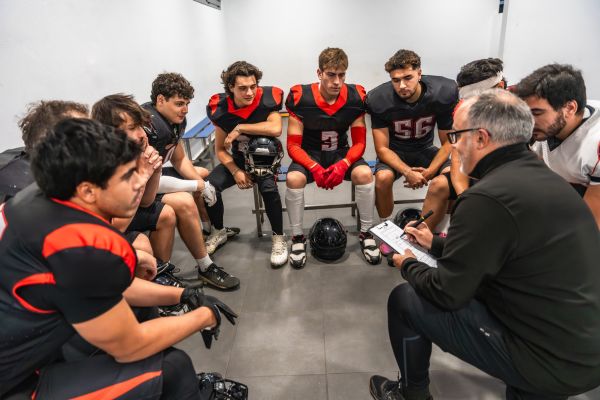High school sports are more than just games—they’re a way of life for many students, a pathway to scholarships, and a foundation for lifelong friendships and character-building. Whether you’re a student-athlete, a coach, or a parent, high school sports offer a unique blend of physical, mental, and social development. But with the fun comes commitment, challenges, and sometimes the question of balance between academics and athletics. So, what makes high school sports so special, and why do they hold such a valued spot in American culture?
Why Are High School Sports Important?
For many teenagers, sports provide an outlet for energy, a boost in confidence, and a way to stay active. But high school sports go beyond the physical benefits. Here’s why they’re considered crucial in the school setting:
- Building Teamwork and Leadership: Students learn how to work together to achieve common goals, developing leadership skills and understanding the value of every team member’s contribution.
- Boosting Academic Performance: Studies show that student-athletes often perform better academically. The discipline learned on the field or court often translates into a more focused approach to studies.
- Improving Mental Health: Physical activity is a known stress reliever, and high school sports help students manage their stress, boosting mood and overall mental health.
- Instilling Discipline and Time Management: Balancing practices, games, and academics forces students to develop strong time management skills and instills a sense of discipline that benefits them in many aspects of life.
- Encouraging Community Engagement: High school games bring communities together, fostering school spirit and pride. It’s not just about the students; families, friends, and neighbors come out to support the athletes, creating a strong sense of community.
Popular High School Sports in the U.S.
The variety of sports offered at high schools across the United States means there’s something for nearly everyone’s interests and skills. Here are some of the most popular ones:
- Football: Known for its excitement and intensity, football is one of the most popular high school sports, especially in states like Texas and Florida.
- Basketball: Played indoors, basketball offers opportunities for both boys and girls to engage in a fast-paced, strategic sport.
- Soccer: Growing in popularity, soccer provides a great cardio workout and promotes teamwork.
- Track and Field: For those who prefer individual sports, track and field offers a variety of events, from sprints to long-distance races.
- Baseball and Softball: America’s pastime is still alive and well, with students competing in both spring and summer seasons.
- Volleyball: A popular choice, especially for girls, volleyball builds agility, hand-eye coordination, and team strategy.
Challenges Faced by High School Athletes
Participating in high school sports has its rewards, but it’s not without challenges. Balancing schoolwork, practice, and social life can be demanding for teenagers. Let’s dive into some of the common challenges and how students can overcome them.
1. Academic Pressure
For many student-athletes, balancing school assignments, projects, and studying with daily practices and games is no easy task. Time management becomes essential.
- Tip: Set a study schedule around your sports commitments, focusing on prioritizing tasks. Many schools offer resources like study halls or tutoring for athletes to help manage their academic responsibilities.
2. Physical Strain and Injuries
Sports are physically demanding, and injuries are common. For high school athletes, injuries can be particularly discouraging, as they may affect not only their current season but also their future in sports.
- Tip: Prevent injuries by ensuring proper warm-ups, stretches, and cool-downs. Work with coaches to understand proper techniques and listen to your body to avoid pushing too hard.
3. Mental Health Concerns
The pressure to perform well on the field, combined with academic responsibilities, can lead to mental health challenges, such as stress or anxiety.
- Tip: Seek balance by setting realistic goals, practicing mindfulness, and talking to trusted adults like coaches, teachers, or counselors.
4. Social Life and Sacrifices
For students heavily involved in sports, time for friends or family events might become limited.
- Tip: Communicate with friends about your schedule and try to plan social activities that fit around your practice and game commitments.
Tips for Success in High School Sports
- Set Clear Goals: Whether it’s improving your skills, making the starting lineup, or pursuing college sports, set clear goals and work consistently toward them.
- Maintain Balance: Academics are just as important as sports. Remember that your education will support you long after your athletic career.
- Stay Organized: With practices, games, and schoolwork, organization is key. Keep a planner or calendar to track assignments, practices, and games.
- Communicate with Coaches and Teachers: Be proactive in communicating any scheduling conflicts or struggles you may have. Both your coach and teachers want to see you succeed.
- Take Care of Your Body: Hydrate, eat well, and rest. Your body needs all three to perform at its best.
The Social Impact of High School Sports
High school sports don’t just affect individual athletes; they bring people together. Schools have pep rallies, homecoming games, and tournaments that unite students, staff, and families. Teams foster friendships that often last beyond high school and help students develop social skills, such as cooperation, empathy, and mutual respect.
For students, high school sports provide a supportive community. Teammates often become friends, mentors, and a support network. For schools, successful sports programs can bring pride and identity to the entire student body.
Frequently Asked Questions (FAQs)
How do high school sports impact academic performance?
Research suggests that students involved in sports often have better academic performance. The discipline and time management learned in sports can carry over into their studies.
What are some benefits of joining a high school sports team?
Joining a high school sports team can enhance physical health, build confidence, teach teamwork, and create a sense of belonging and school spirit.
Are there risks involved in high school sports?
Yes, like any physical activity, sports carry risks of injury. However, with proper training, equipment, and a focus on safety, risks can be minimized.
How can student-athletes balance schoolwork and sports?
Time management is key. Creating a study schedule around sports commitments and using school resources like study halls can help balance academics and sports.
Can participating in high school sports help with college admissions?
Absolutely! Colleges often look for well-rounded students who excel both academically and in extracurricular activities like sports. Scholarships are also available for standout athletes.
Conclusion
High school sports are an incredible opportunity for students to grow physically, mentally, and socially. From learning discipline to gaining lifelong friendships, the benefits of participating in high school sports are vast. But it’s essential to balance academics and athletics to fully enjoy the experience without compromising education. For students considering joining a team, high school sports offer lessons that last well beyond the game.
Authoritative Sources
- National Federation of State High School Associations (NFHS): www.nfhs.org
- Centers for Disease Control and Prevention (CDC) on Youth Physical Activity: www.cdc.gov
- American Academy of Pediatrics on Youth Sports: www.aap.org



